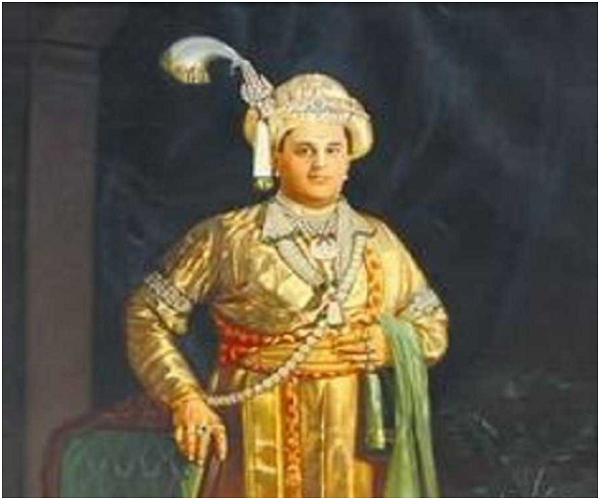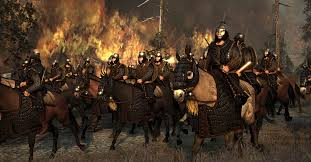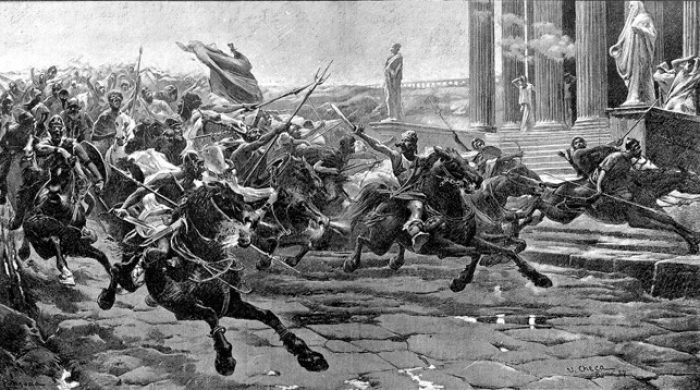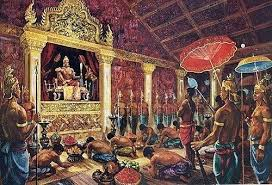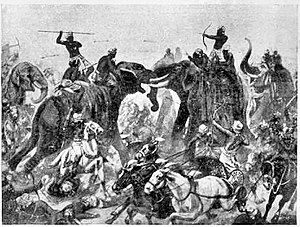Thread on "Harshavardhana".
Harshavardhana was one of the most important Indian emperors of the 7th Century. During the peak of his reign.
His rule was renowned for peace, stability and prosperity, and attracted many artists and scholars from far and wide.
Harshavardhana was one of the most important Indian emperors of the 7th Century. During the peak of his reign.
His rule was renowned for peace, stability and prosperity, and attracted many artists and scholars from far and wide.
The Vardhana dynasty, came into prominence after the decline of the Gupta Empire. Prabhakara Vardhana, the first king, was instrumental in consolidating the small republics and monarchical states that had sprung up in North India after the downfall of the Gupta dynasty.
When Prabhakara Vardhana passed away in 605 CE, his eldest son Rajya Vardhana became the new ruler.
Harshavardhana was Rajya Vardhana’s brother and they also had a sister named Rajyashri. Rajyashri went on to marry the Maukhari King Grahavarman.
Harshavardhana was Rajya Vardhana’s brother and they also had a sister named Rajyashri. Rajyashri went on to marry the Maukhari King Grahavarman.
This was a period of tension as India had to frequently deal with the invasion of the Huns of Central Asia. Constant fights were so costly that they weakened the empire to the core, and this eventually led to the downfall of the Gupta Empire.
Constant fights were so costly that they weakened the empire to the core, and this eventually led to the downfall of the Gupta Empire.
Shashanka of the Gauda Kingdom, modern-day Bengal, marched and killed king Grahvarmana, Rajyashri’s husband, and then kidnapped her. The kidnapping of his sister forced thee Rajyavardhana to march east and confront Shashanka.
Shashanka then invited Rajyavardhana for a meeting and treacherously killed him.
After his brother’s death, at the age of 16, Harshavardhana became the undisputed ruler of Thaneshwar and declared war on Sasaka to avenge his brother
After his brother’s death, at the age of 16, Harshavardhana became the undisputed ruler of Thaneshwar and declared war on Sasaka to avenge his brother
Harshavardhana ruled over entire North India from 606 to 647 CE. It is said that Harshavardhana’s empire reminded many of the great Gupta Empire as his administration was similar to that of the administration of the Gupta Empire.
Harsha easily conquered Kanyakubja as Shashanka went back to Bengal, and thus began a long enmity.
It was only after Shashanka’s death that Harsha was able to control entire eastern India including Magadha, Bengal, and Kalinga.
It was only after Shashanka’s death that Harsha was able to control entire eastern India including Magadha, Bengal, and Kalinga.
Harsha’s Digvijay, or the conquest of the world had now begun. After Kannauj, he turned his attention towards Gujarat. He defeated the local Valabhi kingdom and expanded his empire. Yet, this rapid expansion led to tensions between him and the Chalukya king Pulakeshin II
It was now that the most powerful kingdoms of northern and southern India came face-to-face on the battlefield on the banks of river Narmada. In the end, Pulakeshin II prevailed leaving the ambitious northern ruler, Harsha, defeated.
Harsha entered a peace treaty with the Chalukya king, which established Narmada river as the southern boundary of his empire and after that he never advanced south again. Yet, this did not halt his conquest of the north.
The Vardhana Empire consisted of two distinctive types of territories: areas directly under Harsha& #39;s rule such as Gujarat, Bengal, Kalinga, Rajputana, and the states and kingdoms which had become feudatories under him including Jalandhar, Kashmir, Nepal, Sind, Kamarupa (Assam).
He did not impose heavy taxes on his people and the economy was somewhat self-sufficient. His capital Kannauj attracted many artists, poets, religious leaders and scholars. He sent an Indian mission to China, establishing a diplomatic relationship between India and China.

 Read on Twitter
Read on Twitter